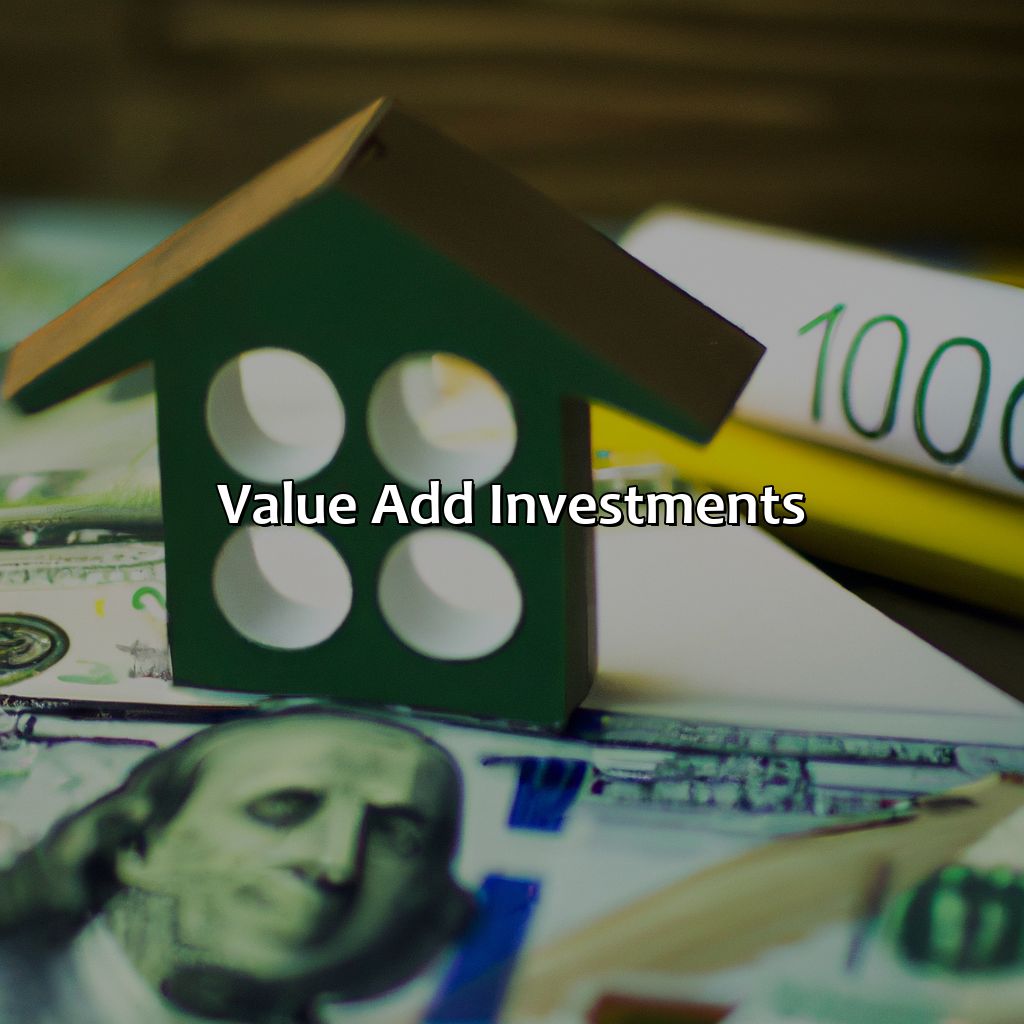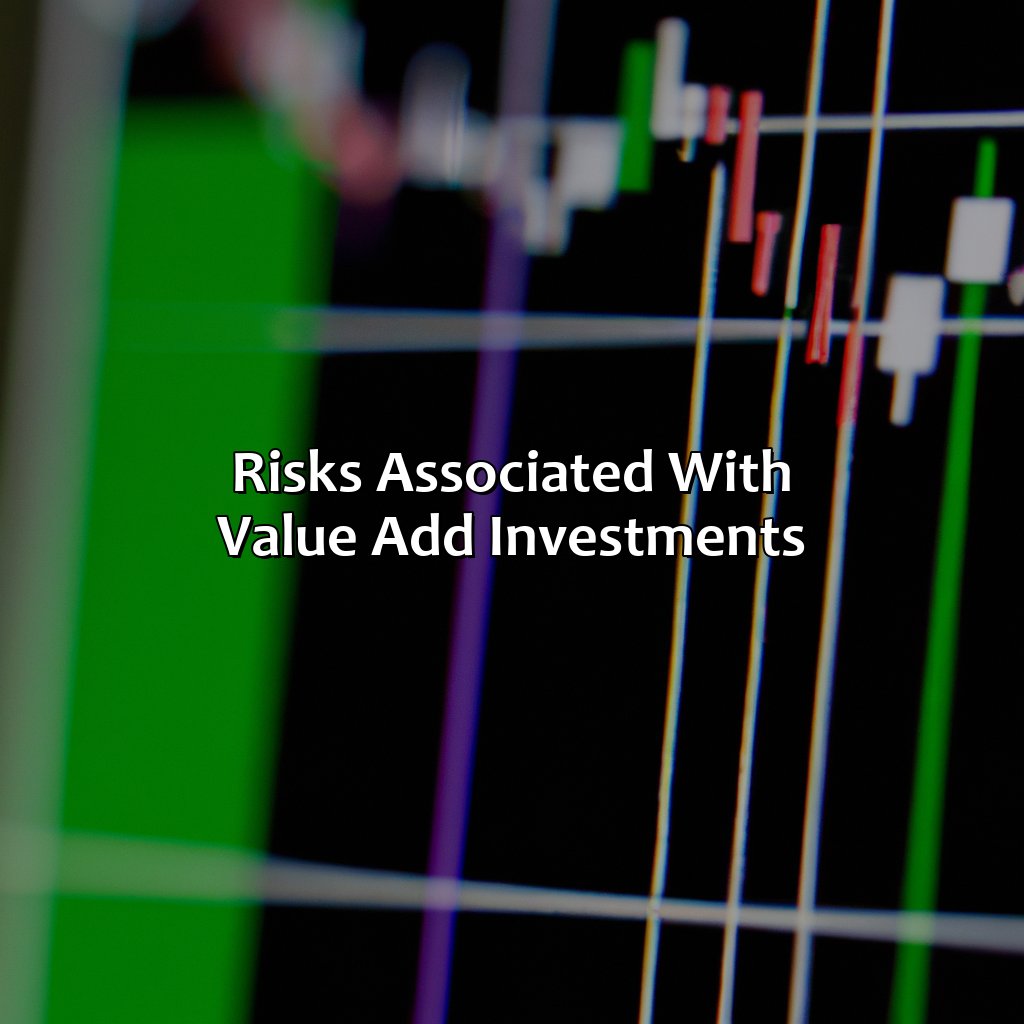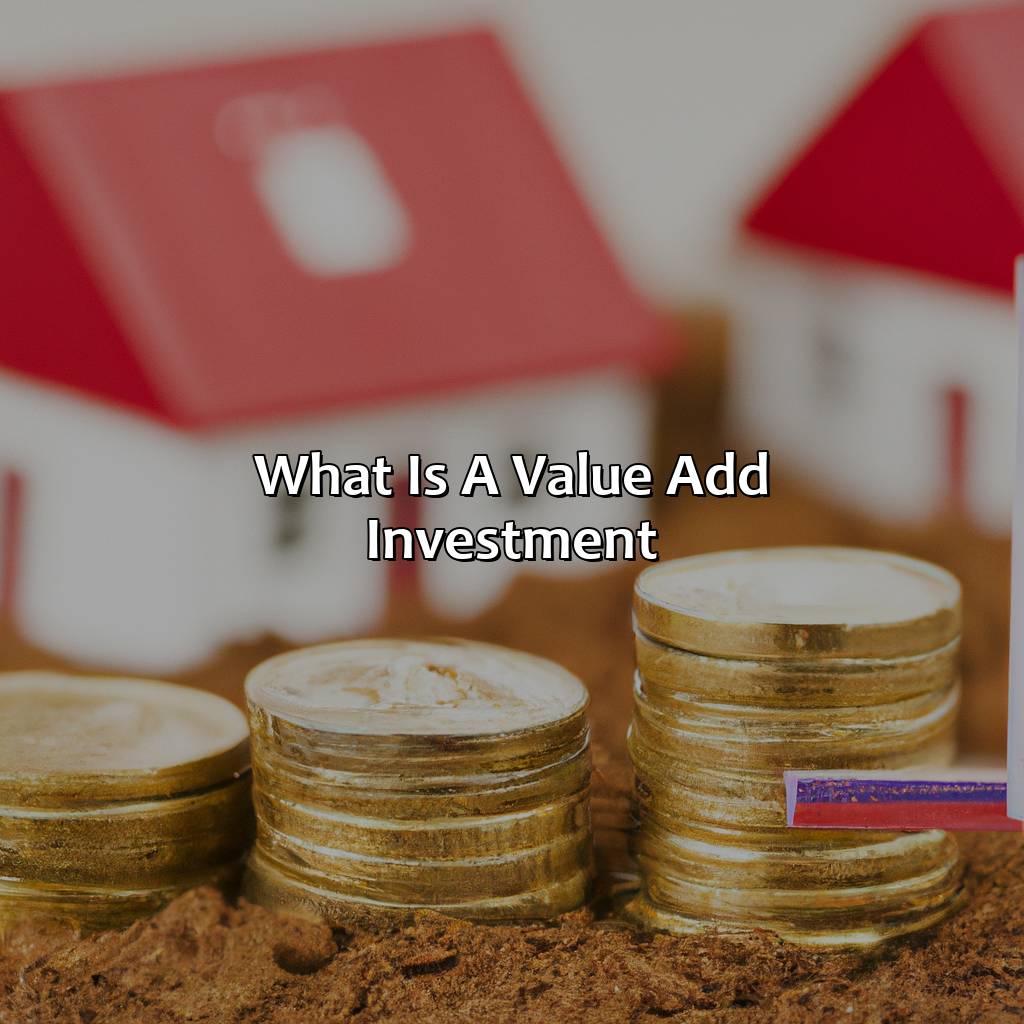What Is A Value Add Investment?
Key Takeaway:
- Value add investments refer to investments made in properties or businesses with the aim of increasing their value through strategic improvements, such as renovations, upgrades, or operational changes.
- Examples of value add investments include rental property renovation, small business expansion, and distressed asset acquisition. These investments require a certain level of expertise and experience, as well as the ability to identify opportunities that have the potential to benefit from value-add strategies.
- Benefits of value add investments include higher potential for returns than traditional investments, tax advantages, and the ability to generate passive income. However, these investments also come with risks, including lack of liquidity, high risk, and the need for investment of time and resources.
Are you looking to maximize your return on investment? Discover what a value add investment can do for you and gain a competitive edge in the market! You can increase your wealth and build long-term stability.
Value Add Investments
Gain an understanding of Value Add Investments! Learn its definition, check out examples, and explore the benefits as a solution. Break it down – value-add investments, its assets, and what advantages it offers.

Image credits: retiregenz.com by David Duncun
Definition of Value Add Investments
Value add investments refer to strategic investments made to a property or asset with the intent of increasing its value. This is done by identifying new opportunities, enhancing existing features, and improving overall functionality.
By identifying a gap in the market or untapped potential in an asset, value can be added to it through various means such as renovating, upgrading technology, improving management strategies and increasing marketing efforts. The goal is to enhance the property or asset’s return on investment both in terms of financial gains and increased market share.
A key benefit of value add investments is that they offer great potential for profitability if executed correctly. However, it requires careful planning and execution to avoid over-investment or underinvestment. Investors must have a clear understanding of the market and trends before embarking on such a strategy.
To maximize returns from value add investments, investors should consider adopting long-term strategies that account for potential risks associated with their investment decision. This includes diversifying their portfolio, actively managing risk exposure, and having contingency plans in place to mitigate any potential losses.
In summary, value add investments are an effective way for investors to increase the worth of their assets. By identifying opportunities for improvement, enhancing existing features, and improving overall functionality highlights the benefits that come with taking action against stagnation within the market while maximising returns on investment.
Ready to add some value to your investment portfolio? Check out these examples of investments that’ll make your accountant proud.
Examples of Value Add Investments
Value Addition in Investments refers to investing in assets that have the potential of earning more value than their current market worth. Such investments require active management and expertise to improve existing features and generate higher returns.
- The most common example of such an investment is a real estate property that requires renovations or improvements, leading to increased rental income or resale value.
- Another value add investment can be investing in stocks of a company undergoing restructuring or expansion, leading to increased profitability or stock price.
- Investing in distressed debt is also among the most popular value add investments, as acquiring such debts at discounted rates can lead to higher returns upon recovery or liquidation.
- Start-up companies seeking funding are also considered prime examples of value add investments, as steering such companies towards profitability and growth results in huge benefits for investors.
One unique aspect of value add investments is that they require hands-on involvement from investors, typically through providing resources, expert advice, or actively managing the invested asset. This level of involvement distinguishes them from other passive investments.
A notable instance of a successful value add investment was when Blackstone Group acquired Hilton Worldwide hotel chain in 2007. Blackstone made significant renovations and improvements resulting in a massive increase in revenue and subsequently sold it at a substantial profit.
Value add investments, because there’s nothing like watching your money work harder than you at the gym.
Benefits of Value Add Investments
Investing in Value Add Assets – Discover the Merits!
Value add investments refer to properties that have the potential for increasing their value over time through strategic modifications or upgrades. Investing in value-add assets can provide a host of benefits, including higher returns than traditional investment opportunities. Here are three primary advantages that investors can derive from their investment in such real estate.
- Upside growth potential: As the name suggests, value add investments generally offer upside growth potential. They allow investors to realize increased returns by increasing property values through upgrades or renovations.
- Diverse Investment Opportunities: With a range of asset types and locations available, investing in value add properties offers an excellent opportunity for diversifying one’s portfolio and minimizing risk exposure.
- Higher Cash Flow Potential: Since value-add investments often require some level of renovation or improvement work, rental income typically expands once they reach full occupancy levels after implementing new strategies. This driving factor results in higher cash flow potential over time.
Investors should keep an eye on market trends to track promising sectors and respond quickly to changing conditions. Proactive investment decisions can help investors succeed by capitalizing on high-potential opportunities while avoiding substandard ones.
Smart investors understand the vast potential of adding value to investment portfolios by investing strategically in valuable properties with growth prospects. Therefore, you wouldn’t want to miss out on the considerable gains that come with investing in value-add assets! Take necessary steps today and delve into prospering investments!
Remember, when it comes to value add investments, the risk may be high, but so is the reward – unless of course you’re allergic to rollercoasters.
Risks Associated with Value Add Investments
To grasp the dangers of value add investments, focusing on Lack of Liquidity, High Risk and Input of Time and Resources; these risks can be a struggle for investors who desire to escalate the worth of a property by means of refurbishing or redevelopment.
Here, we’ll evaluate the possible downfalls of going for value add investments and how to weaken these risks.

Image credits: retiregenz.com by Adam Jones
Lack of Liquidity
One potential challenge that may arise for investors in value add investments is the limited availability of buyers or sellers. This lack of liquidity can lead to difficulties when trying to exit an investment or obtain financing. Moreover, this risk is further exacerbated if market conditions are unfavorable, thereby reducing investor interest and increasing selling pressure.
Additionally, investing in less liquid assets may require a higher level of due diligence and longer holding periods to achieve desired returns. This may also create additional overhead costs such as legal fees and reporting requirements.
It’s essential to note that high volatility adds to this risk, which requires thorough analysis before investing. According to Investopedia, “Emerging market currencies may display more significant volatility than developed-market currencies due to economic and political instability.”
To mitigate these risks, investors need to have a sound understanding of the investment strategy and accurately assess their risk appetite before committing funds. Additionally, they should consider diversifying their portfolio with lower-risk assets to minimize exposure.
Investing in value-add properties requires careful thought and informed decision-making. Therefore, it’s essential for investors always to invest wisely while keeping all these factors in mind. Value add investments are like walking a tightrope without a safety net, so you better brush up on your balancing skills.
High Risk
Value add investments are associated with a considerable level of risk. It is imperative to approach these investments cautiously to balance the prospect of high returns with potential risks.
Value add investments involve buying a property, enhancing its value through renovation or reconfigurations, and selling it for a profit.
The primary reason value-add investments have a higher risk profile than other types of real estate investment is the uncertainty of achieving the anticipated valuation after renovating or reconfiguring the property. Moreover, unforeseen expenses such as construction delays or budget overruns may significantly affect the expected return on investment.
It is also essential to consider other risks, such as market fluctuations, occupancy rates, regulatory changes, and environmental issues that may arise during ownership. Therefore, it’s crucial to enlist professional help before investing in any value-add opportunity.
To maximize returns from a value-add property investment and minimize its potential risks, investors must conduct thorough due diligence, assess their capacity for bearing risk, and actively manage their investment. Failure to do so may lead to significant losses or missed opportunities.
Investors who adequately evaluate the benefits of value-add real estate while minimizing the potential risks can enjoy substantial profits from these opportunities. However, those who fear missing out on any lucrative business may suffer significant financial losses if they make an ill-advised investment decision.
Value add investments are like a DIY project – they require time, resources, and the willingness to potentially screw things up.
Investment of Time and Resources
Making an investment of time and resources is a fundamental aspect of value add investments. Value add investments require adequate financial resources and strategic planning, but inevitably, they also necessitate significant amounts of time and effort from the investor. This type of investment requires a long-term commitment from the investor, as it takes more time to realize a return on your initial investment compared to other types of investments.
One should always be prepared for the expected challenges that come with investing time and resources in these ventures. There are project management challenges that could arise, such as shifting priorities or unexpected developments within the market. Conducting thorough research into potential value-add opportunities can help mitigate some risks associated with this type of investment.
Investment in diligence and careful risk assessments will be integral to any successful value-added real estate project. The investor should have proper knowledge about specific areas to focus on in order to bring out possible returns, whether it be improved marketing or property renovations. Another key factor that must not be overlooked is paying close attention to tenants’ needs. For example, establishing strong communication channels between tenants and landlords can lead to tenant retention, thus improving the overall performance of the asset.
In recent years, many successful firms have used these methods provokingly for growth. In particular, companies have been utilizing data analytics coordinated with innovative technologies like machine learning models or artificial intelligence software systems which has resulted in efficiency gains by helping companies “understand” their assets better.
Some Facts About Value Add Investment:
A value add investment is a strategy that involves purchasing a property with the intention of improving it and increasing its value. (Source: BiggerPockets)
Value add investments typically require a larger initial investment, but can offer higher returns than other strategies. (Source: Forbes)
Common value add strategies include upgrading the property’s amenities, reducing expenses, and increasing occupancy rates. (Source: Investopedia)
Value add investments are often targeted towards experienced investors who have the resources and knowledge to execute the strategy successfully. (Source: The Balance)
Despite the higher risk associated with value add investments, they can offer a worthwhile opportunity for investors looking to diversify their portfolio. (Source: U.S. News & World Report)
FAQs about What Is A Value Add Investment?
What is a value add investment?
A value add investment is a type of real estate investment strategy where an investor purchases an underperforming property with the intention of making improvements to increase its value and profitability.
What are Examples of value add investments?
Examples of value add investments include renovating a multifamily property, upgrading the amenities in a commercial complex, or repositioning a retail property by attracting new tenants.
How is a value add investment different from a core investment?
While a core investment focuses on stable properties with reliable cash flow, value add investments typically require a higher level of risk and due diligence. Investors must identify opportunities to improve income, reduce expenses, and increase property value, which can involve significant renovation and repositioning efforts.
What are some benefits of a value add investment?
The potential benefits of a value-add investment can include higher returns on investment, increased cash flow, and improved property value. Additionally, these types of investments can offer investors a degree of control over the property, allowing for more direct involvement in decision-making and operations.
How can I evaluate the potential of a value add investment?
Before investing in a value-add property, it’s important to conduct extensive due diligence to assess the risks and potential rewards. Evaluate the property’s current performance, market conditions, and the cost and feasibility of any planned improvements. This can involve working with experienced real estate professionals, such as brokers, consultants, and contractors.
What are the risks of a value add investment?
The risks of a value-add investment can include unexpected expenses, market volatility, and difficulty in executing planned improvements. Additionally, these types of investments may require a longer holding period before realizing the expected returns. Investors should carefully consider these factors before deciding to pursue a value add investment strategy.
 Checkout this IRS Loophole
Checkout this IRS Loophole 
